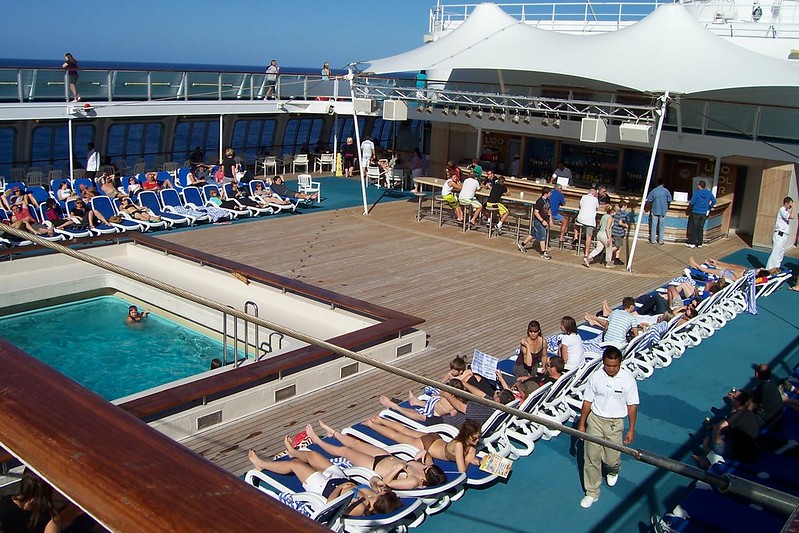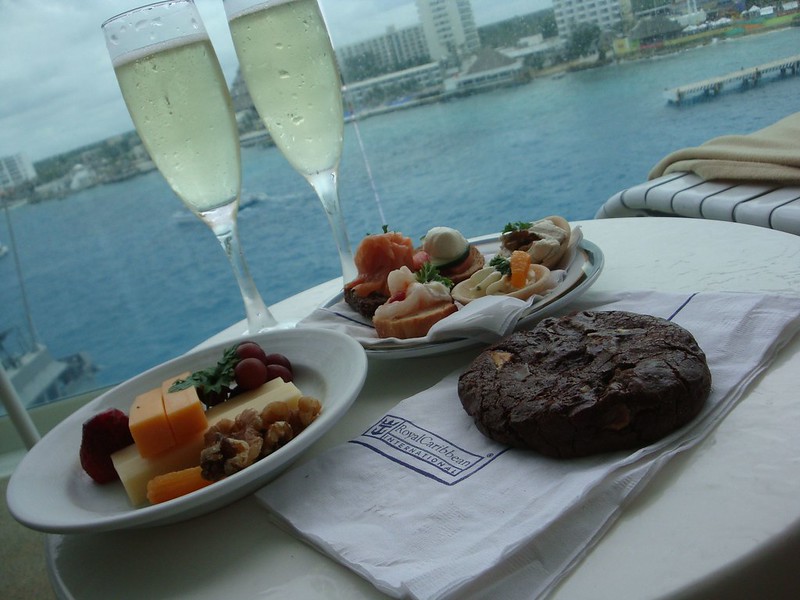10 ways to beat hidden costs at sea
By Suzanne Rowan Kelleher
Think your cruise price is all-inclusive? Wake up and smell the $4 lattes, $10 yoga classes, and $15-a-pop souvenir photos. Or better yet, read the fine print of your contract. On a cruise ship, incidentals have a nasty way of adding thousands of dollars to your overall cruise cost.
Before your cruise, sit down with your family and discuss what is included in the fare. Most likely, that will be your accommodations, meals in dining rooms and cafes, and activities in the kids’ clubs. Come up with a policy about what everyone is allowed to do and buy, and what is forbidden. You might even decide on a cash-only rule for incidentals to keep from racking up costs. Here are some strategies to avoid becoming an incidental tourist:
- Go indie with excursions. Many, many families blow their budget in the ports of call. Your brochure will talk glowingly of scuba and snorkeling, dolphin swims, and kid-friendly sightseeing. Then comes the big letdown: These ship-sponsored tours can run anywhere from $30 to $350 per person, depending on the cruise line, destination, and activity. Realize that, on average for each port, it could easily cost $300 for a family of four to join one of the ship’s outings. Shore guides frequently expect a tip of 5% on top of the tour price.The easiest way to beat down your off-ship costs is to look outside the ship’s program. Consider purchasing your excursions from an independent tour operator, who likely will offer similar, but lower-priced, excursions in your ports of call. For example, ShoreTrips offers a huge array of options from 400 local tour operators on 22 Caribbean islands. Another company, Port Promotions, offers off-ship excursions in Alaska, Hawaii, the Caribbean, and Europe.If your destinations are all about sand and surf, it can be easy to go cheaper still. In lively ports of call, it’s easy to hoof it off the ship and explore on your own for free. A cheap, family-pleasing option may be to catch a cab to the nearest beach.

(MORE: Find the perfect cruise destination for the whole family.)
- Be beverage savvy. Here’s an eye-popper for many first-time cruisers: The drinks ain’t free. You’ll pay not only for alcoholic beverages, but probably also for bottled water, soda, and your premium latte. Another stinker: Every time you order a drink, your bar tab will typically plunk on an automatic gratuity. If you want to have a cocktail or two, it pays to find out which bars and lounges are offering drinks specials, and when. Likewise, ordering the house special instead of your favorite name brand can save big money over the course of your cruise. Even if you don’t drink alcohol, it’s alarmingly easy for a family to rack up a triple-digit beverage tab. One way around this is to cruise with Disney, whose ships offer free, unlimited fountain sodas. Most other cruise lines offer an all-you-can-drink fountain soda card for the duration of the cruise, usually for about $5 per person, per day. These pay-up-front cards can make a lot of sense when you’re cruising in the Caribbean or other tropical locales, when you can foresee drinking more than four or five sodas or bottles of water per day.
- BYO Cooler. Put these items on your packing list: One crushable, insulated cooler; a sports bottle for every member of the family; and some one-gallon zip-top storage bags. While most cruise lines won’t let you bring alcohol on board, some lines allow you to bring your own soft drinks and bottled water (always check policies before you go). Make a point of refilling your sports bottles at the breakfast buffet’s beverage counter. In ports-of-call, most cruisers end up noshing on overpriced, indifferent tourist fare. A better plan: Pack a picnic lunch from the ship. Score a couple of sandwiches from room service, lift some fruit and rolls from the breakfast buffet, and ta-da!—you’ve got a free lunch to go.
- Think about childcare. Waiting until your kids are old enough for the kids’ clubs makes sense on many levels. One is that it will save money on childcare. Dropping your child at the kids’ clubs is free. Hiring an in-cabin sitter, or dropping your little one in the nursery or nighttime group babysitting room isn’t. Count on $5 to $10 per hour for the first child.
- Mix-n-match activities. Every cruise line offers a range of free entertainment, games, and activities. But some of the more interesting activities come with a price tag—perhaps $10 to attend a yoga class or $40 for a cooking class. Build your daily itineraries by mixing free with fee. By the same token, you should set a daily budget for the casino or stay away completely if you can’t afford to lose.
- Hit the spa on port days. Really, now. You knew the 90-minute, four-hand massage wasn’t going to be cheap. But you don’t have to pay top dollar. There are two golden rules about shipboard spa treatments: (1) Book immediately after getting on the ship. Appointment times for the entire cruise will be booked solid before the first nightfall. And (2) Save spa visits for port days, when they’re often cheaper. When everyone goes ashore, prices tumble. Don’t forget to tip the beautician or masseur who treats you.

- Unplug. How badly do you really need to touch base when you’re away? Ship-to-shore calls home are cheaper now that most ships have cell phone coverage. Wi-Fi has made it cheaper to access the Internet. but we’re still talking about 75 cents a minute for screen time. You’ll pay international roaming charges for those cell calls—so why not just turn your phone off? Warn your kids before you sail that the ship’s pricey Internet café won’t play a big part of their life onboard.
- Curb indulgences. Those lattes and hits of Haagen-Dazs really add up. Give yourself a daily limit for non-inclusive treats, and stick to it. Staged family portraits can cost $30 or more. Obviously, tee-shirts, toys, and other gift-shop items can add up fast.(MORE: View more tips for making kid-friendly cruises more affordable.)
- Stay healthy. Don’t forget the hand sanitizer. The ship’s doctor will charge you for an office visit, and you’ll also pay for any medication he might prescribe. But don’t expect to just hand over your insurance card. Ask your health insurer before you go if you’re covered outside the US. Chances are that, even if you are, you’ll have to pay up front and be reimbursed later. The way around it? Buy third-party travel insurance.
- Budget ahead for tips. First, the good news: You don’t tip the captain, purser, or other officers, who are salaried professionals. The bad news? You tip virtually everyone else who works on the ship. It’s become increasingly common for cruise lines to help you do the math and, bless ’em, automatically add a gratuity charge to your shipboard account. On most cruises, the going rate is $10 to $12 per person, per day of the cruise. This takes care of the restaurant and cabin staff (restaurant manager or head waiter, waiter, assistant waiter, busboy, and cabin steward). On more upscale cruises, the per diem tipping rate may be higher in order to include the maitre d’, head housekeeper, and butler. So, a family of four on a four-night cruise is probably looking at a gratuity charge of $160 to $192—cash in the envelope, please. Oh, and don’t forget to tip the porter who carries your bags at the pier. Figure a dollar or two per bag.






